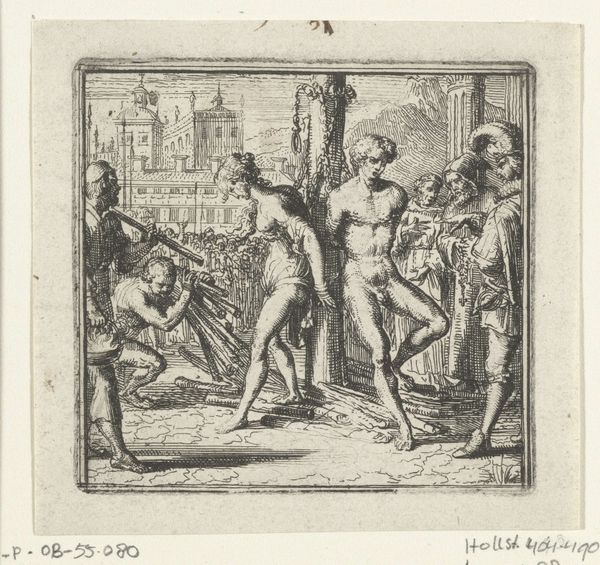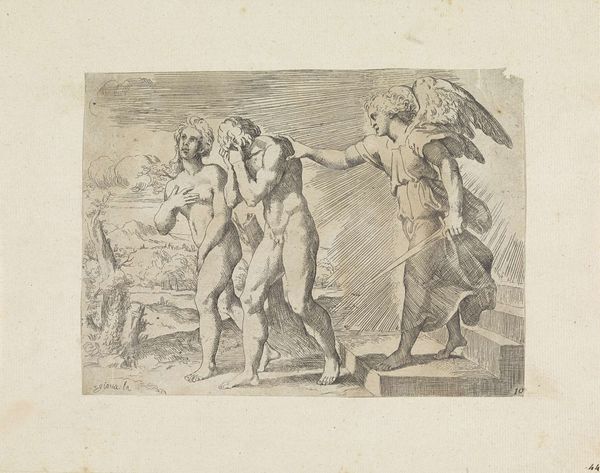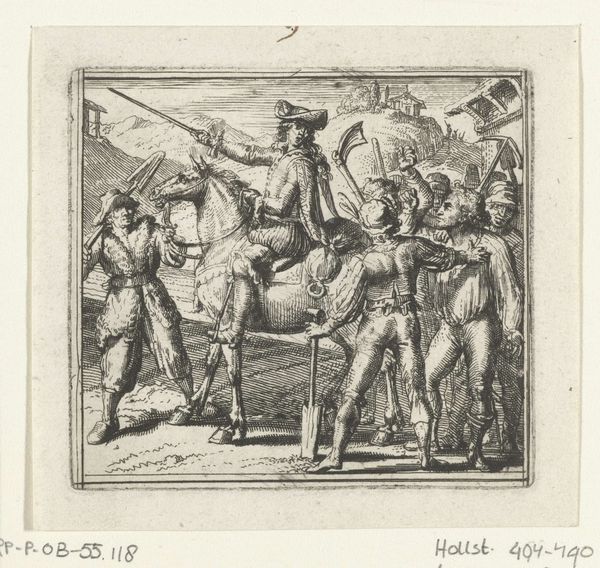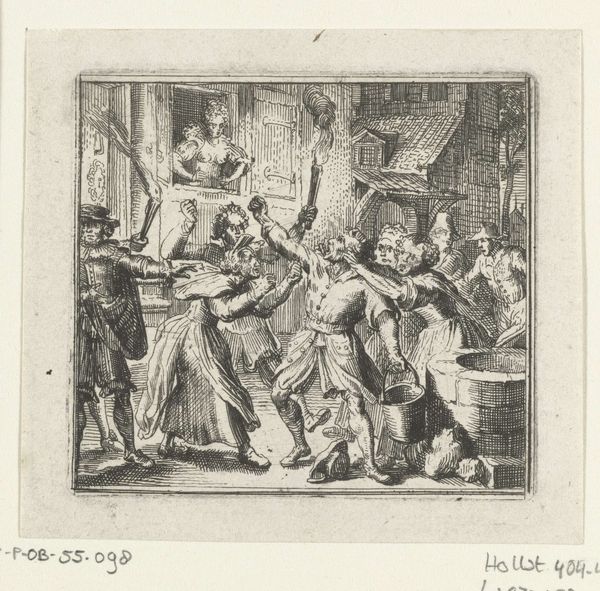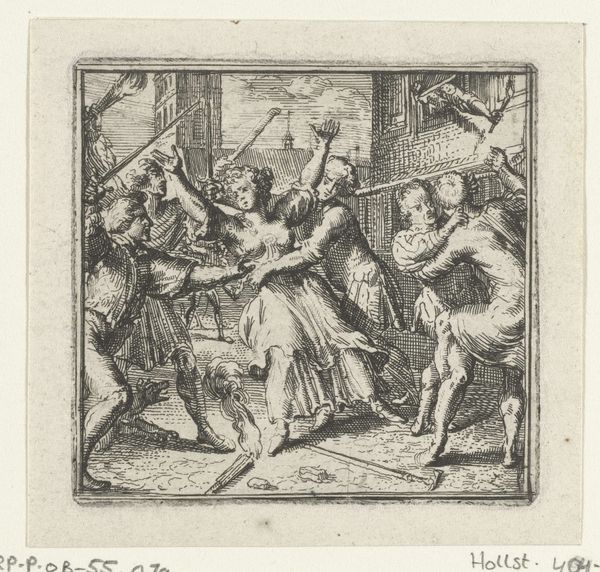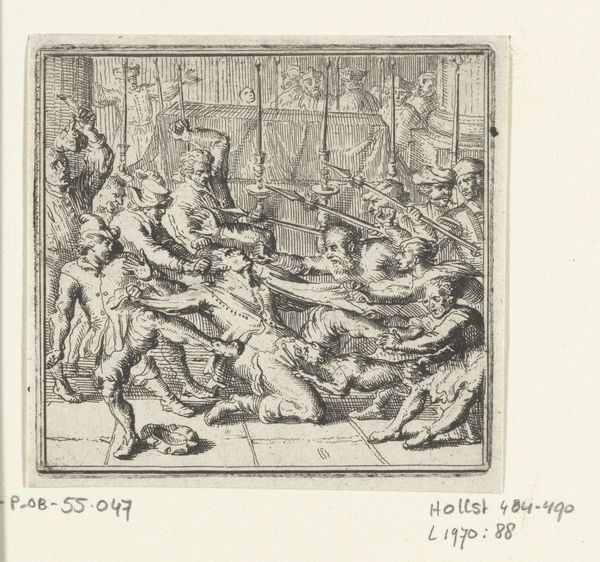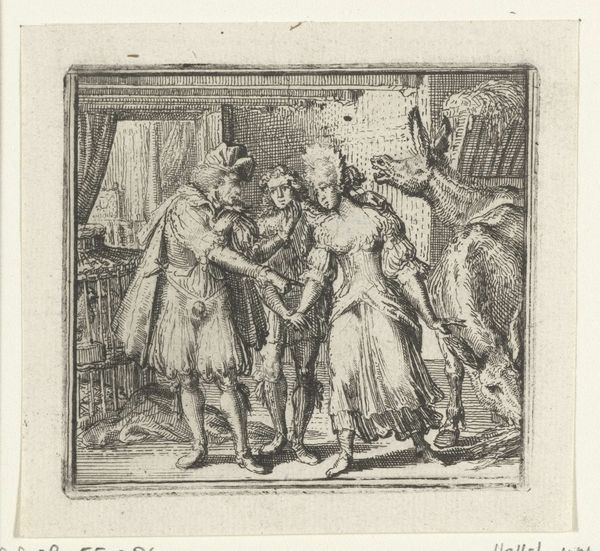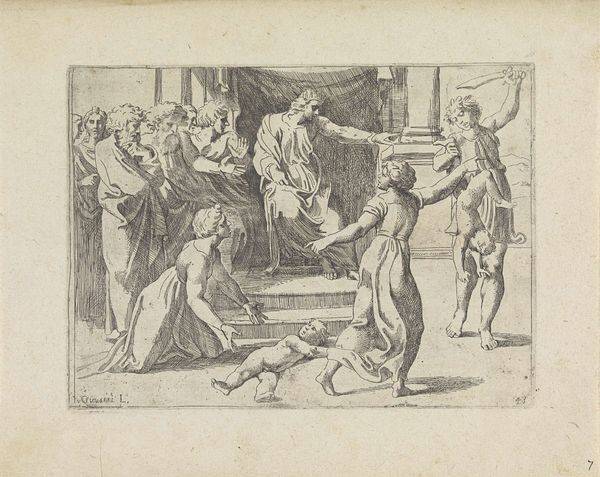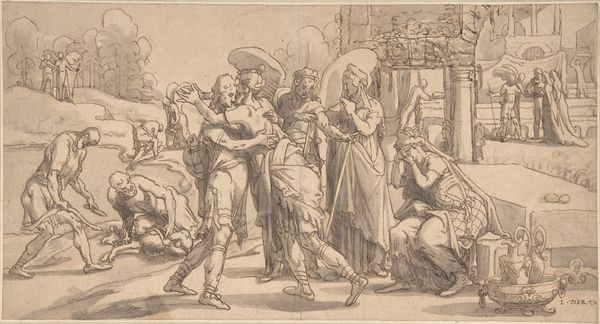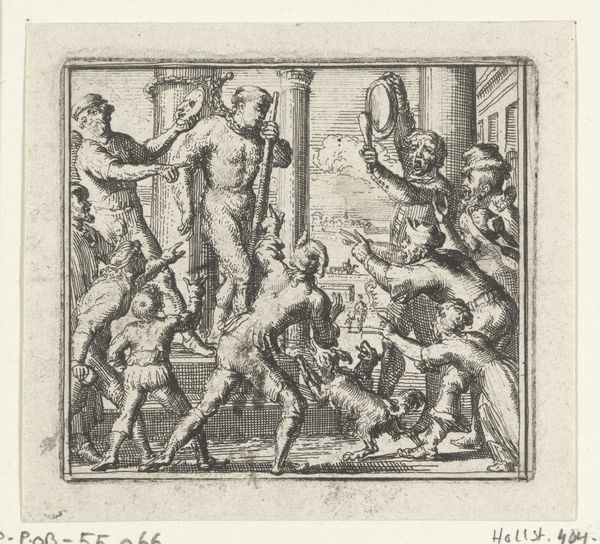
print, etching, intaglio, engraving
#
narrative-art
#
baroque
# print
#
etching
#
intaglio
#
figuration
#
line
#
history-painting
#
engraving
Dimensions: height 76 mm, width 80 mm
Copyright: Rijks Museum: Open Domain
Curator: Ah, here we have Romeyn de Hooghe's "Illustration for Boccaccio's Decameron," created around 1697. It's an etching, currently held in the Rijksmuseum. Editor: What strikes me first is the intensity of the line work. It's almost frenetic, conveying a real sense of anxiety and crowdedness within the scene. What story does this engraving tell? Curator: Well, being an illustration for the "Decameron," it's likely depicting one of Boccaccio's tales, filled with the typical Renaissance themes of love, fortune, and human folly. Though without a specific title for the print, we can't be certain which tale is shown. The bare-chested man tied up, the armed guards…it hints at betrayal, certainly. The tools surrounding him for labor also lead me to believe there is the physical act of working being betrayed. Editor: Yes, the act of depicting is a work act on its own! Think of the labor involved in creating this print—the copper plate, the acid, the precise application of the burin. It highlights how "high art" relies on those material processes, right? Intaglio demands such careful labor. Curator: Precisely! De Hooghe's skill with the etching needle is on full display here. See how he creates depth and texture simply through the density and direction of lines? The emotional weight comes from that, from the sheer physicality of the process made manifest. The story unfolds by the tool, guided by hand, informed by history. Editor: The clothing of these figures also looks important in showing status and historical information. What can you say about how de Hooghe renders his subjects based on that? Curator: This particular style seems indicative of the fashions of that period. Though some parts appear to be a hodgepodge to evoke classical styles with the draping garments. It's all tied together to amplify the underlying narrative about moral complexities and social order inherent within the "Decameron". The artist must have deeply examined the material constraints of his time period to best depict the stories in question. Editor: It certainly forces you to consider all the elements working together. Curator: It does, doesn't it? From a skilled rendering into etched lines in order to capture the complex story. What a delight this print is! Editor: Indeed. It's a reminder that art-making is always rooted in materiality and production as well as deeply sensitive insight.
Comments
No comments
Be the first to comment and join the conversation on the ultimate creative platform.
